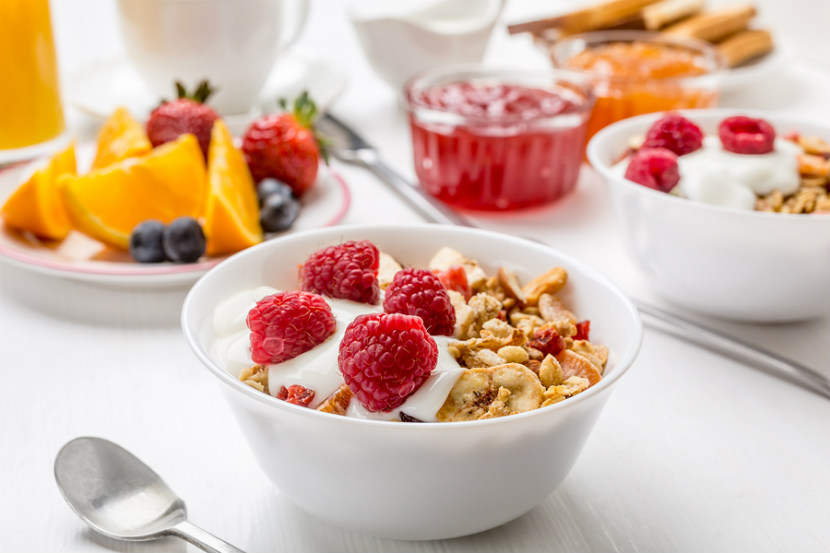
Breakfast cereals are a quick and easy way to start your day. But not all cereals have the same nutritional benefits. Here are a few tips on choosing the best cereals the next time you are shopping.
1. Choose whole grains
Choose cereals where the first ingredient listed is a whole grain. Look for the word “whole” in front of the grain. For example, “whole grain whole wheat flour” and “whole oats”.
Why are whole grains important?
Whole grains have been shown to reduce the risk of heart disease, diabetes and certain cancers. Whole grains also contain more fibre and nutrients than processed grains.
2. Look for more fibre
Men need 38 grams of fibre a day, and women need 25 grams each day. Choose a high fibre cereal with at least 4 grams of fibre in every serving. Check the serving size as it may be a lot smaller than you think. Find out more about label reading here.
Why is fibre important?
Fibre helps keep our digestive system healthy, lowers blood cholesterol, helps control blood glucose (in people with diabetes), and can prevent some cancers. An added bonus is that fibre can help you feel fuller longer.
3. Go lower on sugar
Choose cereals with less or no added sugar when possible. Sweeten the cereal yourself by adding fresh, frozen or dried fruit, vanilla or cinnamon for added sweetness and flavour.
If your cereal is sweetened, compare nutrition labels and choose cereals with less sugar.
4. Cut down on sodium (salt)
Look for cereal with less sodium (salt). Compare labels to choose ones with less sodium. A good rule of thumb is to find a cereal with 200 mg or less of sodium per serving.
5. Watch the serving size of cereal
Check the food label for what is considered one serving of that cereal. A dense bran cereal will likely have a smaller serving size than a light cereal like rice puffs. Use measuring cups or a scale to see how much you’re eating. If you’re going to eat more than one serving, double or triple the numbers you see on the Nutrition Facts table.
Cereal, five ways
Instead of just having plain cereal and milk at breakfast, try some of these ideas:
-
Top whole grain cereal with a generous amount of fresh or frozen berries. Other great toppings to use: banana, peach and plum slices, mango, papaya, lychee nuts, dried apricot, cranberries, walnuts, almonds and pumpkin seeds.
-
Make your own trail mix with whole grain, high fibre cereal, dried fruit, nuts and seeds.
-
Use high fibre cereal to make homemade muffins, quick breads, pancakes and waffles.
-
Top your cereal with yogurt, kefir or fortified plant-based beverage instead of milk.
-
Heat up your cold cereal for warm comfort on a cold day. Add cinnamon or vanilla for extra flavour.
-
Try this overnight apple pie oatmeal for a cooler twist on traditional oatmeal.
How can a dietitian help?
A dietitian can help you choose nutritious packaged foods, like breakfast cereal. They will work with you to compare different food labels and show you what to look for. A dietitian can help you plan a balanced diet that includes heart healthy foods and considers your lifestyle, culture and medical history. Connect with a dietitian today!
Bottom line
When you choose a nutritious breakfast cereal, it can be a quick and healthy breakfast or snack option. Look for a breakfast cereal made with whole grains, one that is high in fibre, and low in added sugar and sodium.
You may also be interested in:
Choosing Whole Grains FAQs
How to Choose the Best Sliced Bread
Where Do Dietitians Work and What Do They Do?
This article was written and reviewed by dietitians from Dietitians of Canada. The advice in this article is intended as general information and should not replace advice given by your dietitian or healthcare provider.
Last Update – January 9, 2023